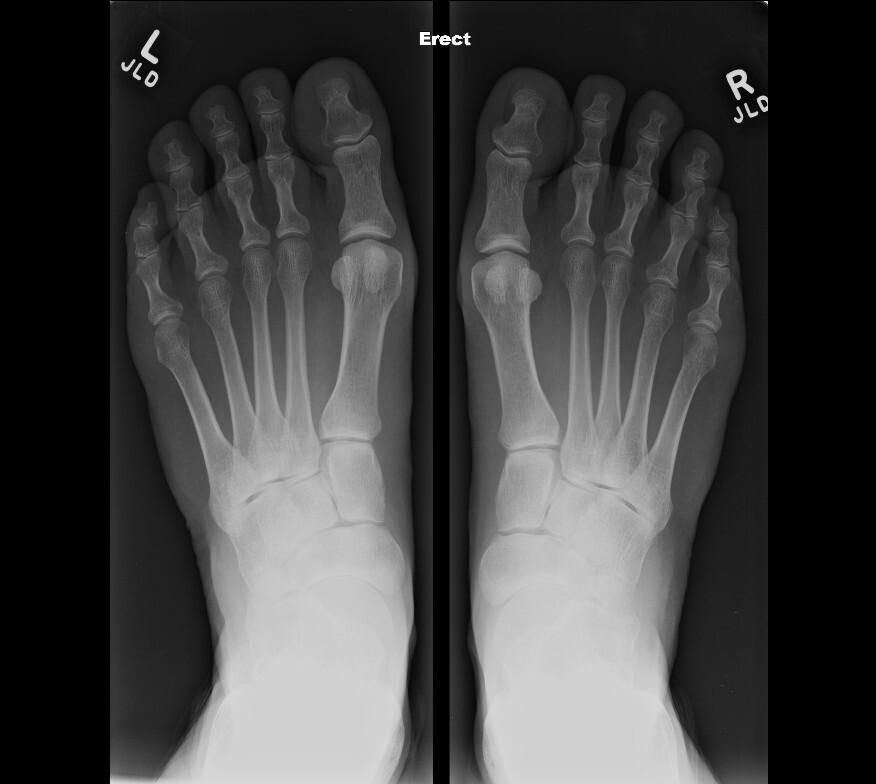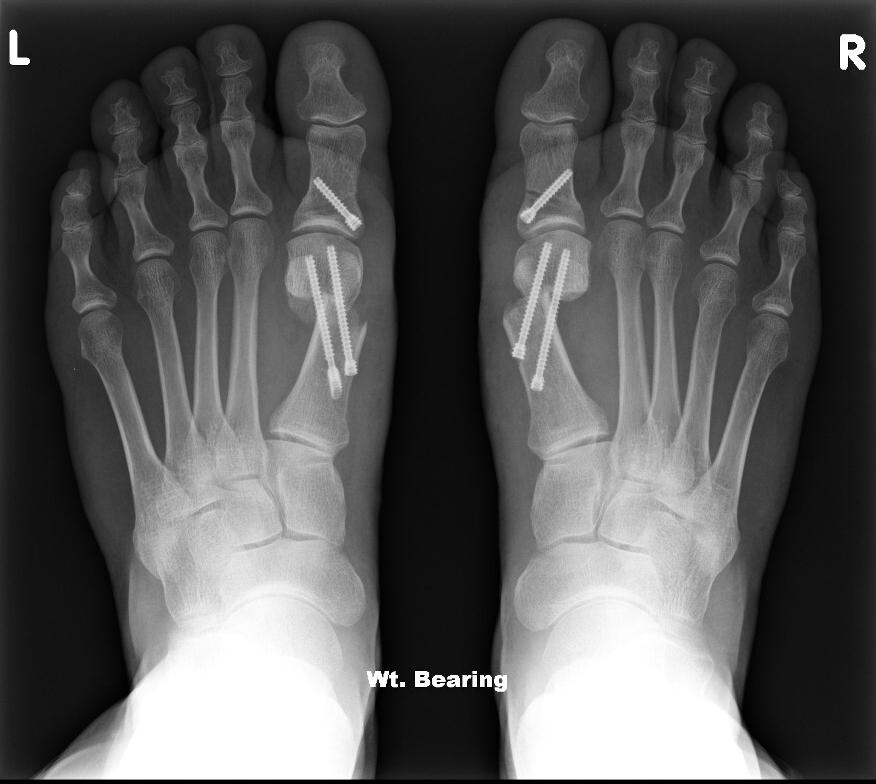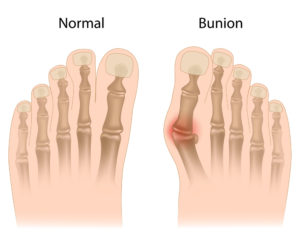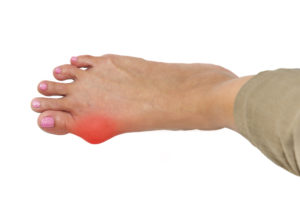Have you been diagnosed with bunions? Has it been getting exceedingly uncomfortable? And you’re beginning to think about your next option? Or perhaps your family member has developed a bunion and you want to better understand what that means? Well, we’re here to help you understand bunions and provide you with the necessary information about hallux valgus correction surgery and recovery.
What are bunions?
A bunion is a deformity of the big toe. Basically, the big toe tilts towards the smaller toes, which makes a bony lump appear on the inside of the foot. The bony lump that appears is the end of the “knuckle-bone” of the big toe (in medical terms, the “first metatarsal bone”) which becomes exposed as the toe tilts out of place. Sometimes swelling of soft fluids develops over the bony lump causing more discomfort.
Note: The medical terminology for a bunion is “hallux valgus” and is how most doctors will refer to it.
How do you get bunions?
Bunions often run in the family. They can also be caused by the shoes you wear or the way you walk. If bunions do run in your family and you are at all worried about developing bunions, we recommend you get a referral from your GP to see a podiatrist. They are great at evaluating your walk to locate any issues with your feet and ankles, they will also prescribe the right shoes for your feet.
Approaches to relieving bunion pain
There is no foolproof method for reducing the pain caused by bunions, however, here are some things you can try that you may find work well for you:
- Maintain a healthy weight, the less weight you carry, the better off your feet will be as they are under less stress.
- Buy well-fitting footwear, buy shoes from a store where the staff measure your feet. If you have bunions, standard sizing and shoes may not be right for you.
- Protect the sore bunion area by purchasing gel inserts to put in your shoes.
- Take over the counter anti-inflammatory drugs such as Nurofen
- Warm socks, ice packs and massages have also been known to relieve bunion pain.
Hallux valgus correction surgery
As all bunions are permanent unless surgically removed, hallux valgus correction surgery has become very common. There are two categories of surgery that Hallux valgus correction surgery falls under, which is either open or minimally invasive. Minimally invasive (MI) foot surgery means that the operation is carried out with less invasive techniques which have a multitude of benefits including smaller surgical openings, more precision, faster healing time for the patient and less/smaller scars.
Generally, this surgery is done under general anaesthetic (asleep), however, the anaesthetist advises what’s best for each patient.
The surgery:
- Once asleep, the local anaesthetic will be injected into your foot to reduce the pain after the operation.
- A series of 5 tiny incisions are made along the inside of the great toe.
- The knuckle bone (first metatarsal) is cut through and re-positioned.
- The knuckle bone is then fixed with metal screws, which are buried in the bone.
- This is all done under Xray guidance to ensure perfect correction.
- The tiny wounds are closed with buried sutures that dissolve.
- Dressings and bandages are then applied to the foot and a protective sandal is fitted.
Correction surgery recovery
The recovery slightly varies depending on whether one foot or both were operated on. If it is just the one foot then:
- With the use of a protective sandal with a stiff sole (and a completely bandaged foot) you can walk straight after the surgery. You will be able to put as much weight on your foot as comfortable when you walk, though preferably keeping the weight on the heel of your foot.
- Once you are comfortable after the operation you are discharged from hospital on the same day.
However, if both feet are operated on, or any second surgery is performed, then you are usually asked to stay in the hospital for 1-2 days.
Regardless of whether it was one foot or two, after being discharged from the hospital, when you are home, it is very important that:
- The leg remains elevated most of the time in the first 2 weeks – rest is important.
- Do not wet or remove the dressings.


Now it is normal to expect during post-op and recovery:
- Swelling – this can be minimised by elevating your foot above your heart; icing the foot may be helpful.
- Pain – You will receive a prescription for pain medication on discharge from the hospital. Pain can also be minimised by elevating your leg.
- Bleeding – This always occurs and you may notice some oozing through the bandages.
Two weeks after surgery:
- You will have an appointment in Dr Sterling’s rooms, during which the dressings will be removed and the wounds inspected. You will be shown how to exercise your toe, look after your wound, and how to splint your toe to stop it bending back against the smaller toes. More normal shoewear can be used, if it is available.
If your feet have been in extreme discomfort and you’ve previously taken measures to reduce the pain (with not much luck), then it is time for a consultation with us. Let’s get your feet back to normal and eliminate that pain. Visit your GP to get a referral and contact us for an appointment with Greg Sterling Orthopaedics.






